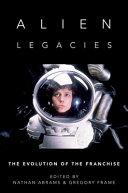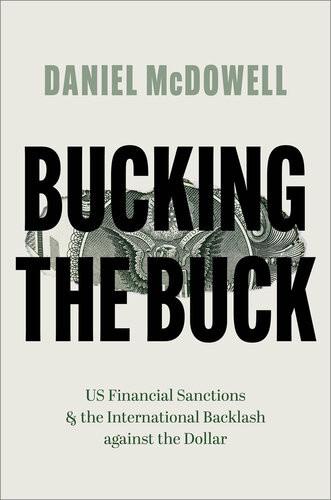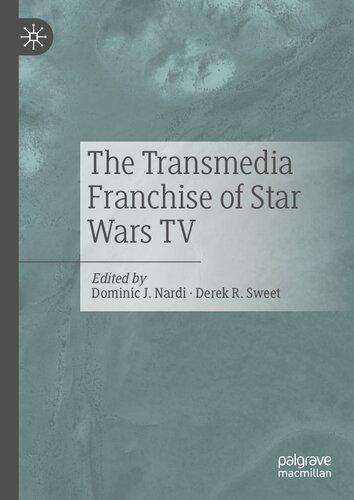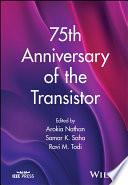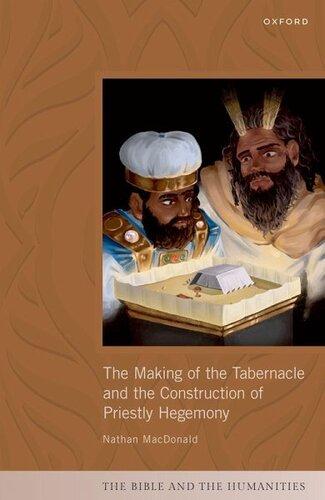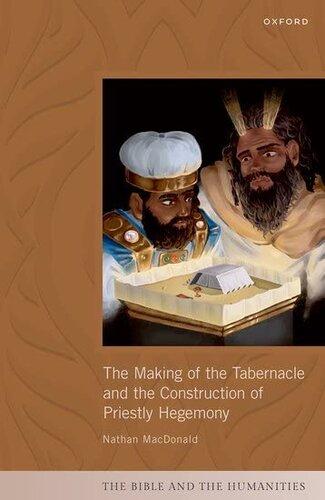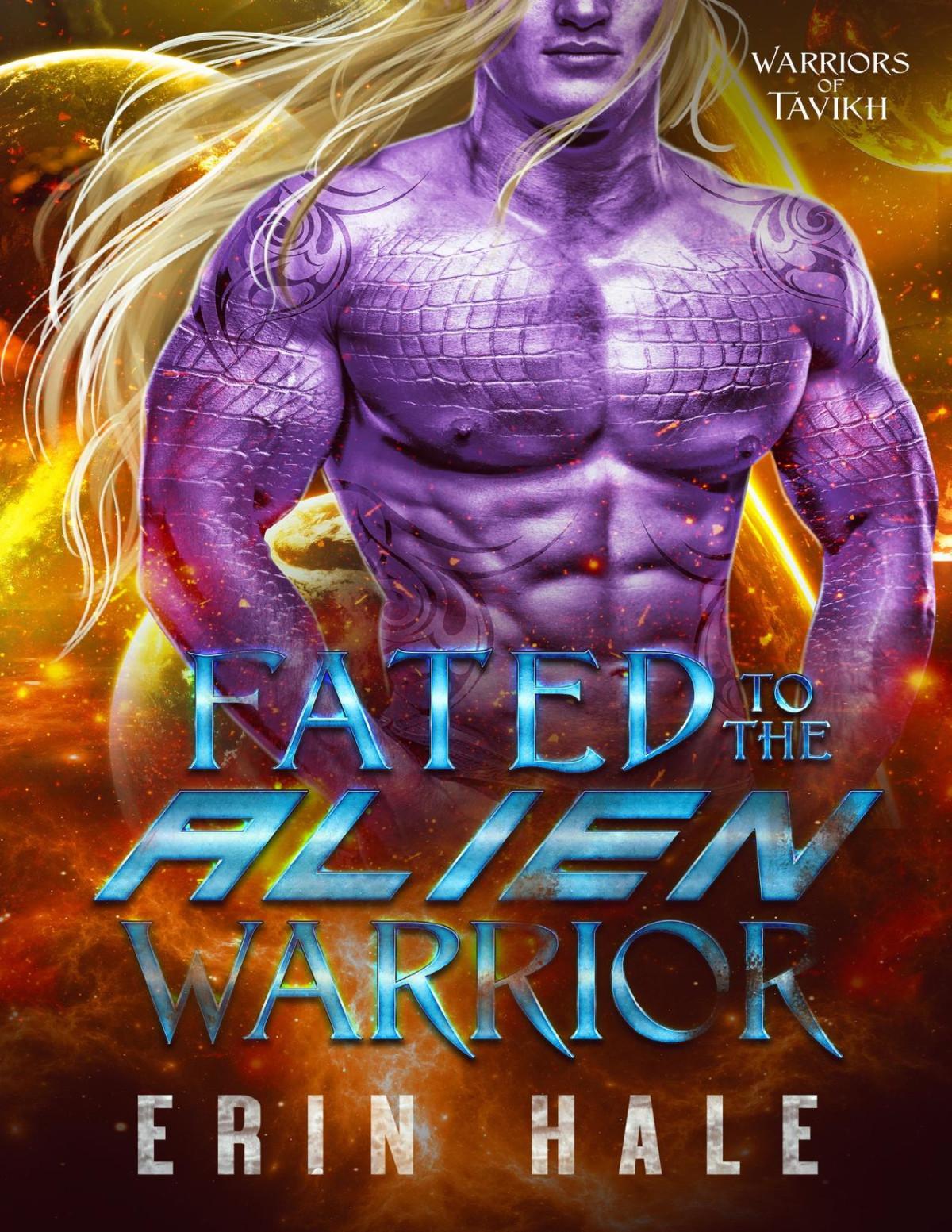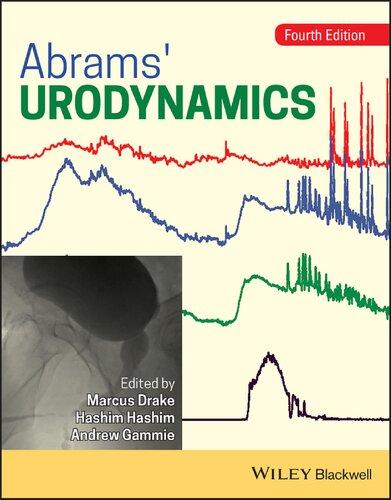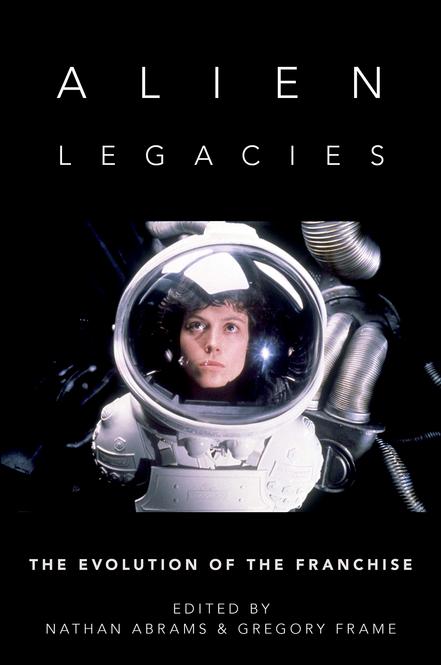Alien Legacies
Te Evolution of the Franchise
Edited by NATHAN ABRAMS AND GREGORY FRAME
Oxford University Press is a department of the University of Oxford. It furthers the University’s objective of excellence in research, scholarship, and education by publishing worldwide. Oxford is a registered trade mark of Oxford University Press in the UK and certain other countries.
Published in the United States of America by Oxford University Press 198 Madison Avenue, New York, NY 10016, United States of America.
© Oxford University Press 2023
All rights reserved. No part of this publication may be reproduced, stored in a retrieval system, or transmitted, in any form or by any means, without the prior permission in writing of Oxford University Press, or as expressly permitted by law, by license, or under terms agreed with the appropriate reproduction rights organization. Inquiries concerning reproduction outside the scope of the above should be sent to the Rights Department, Oxford University Press, at the address above.
You must not circulate this work in any other form and you must impose this same condition on any acquirer.
Library of Congress Cataloging-in-Publication Data
Names: Abrams, Nathan, editor. | Frame, Gregory, 1985– editor. Title: Alien legacies / [edited by] Nathan Abrams, Gregory Frame. Description: New York : Oxford University Press, [2023] | Includes bibliographical references and index.
Identifers: LCCN 2022049826 (print) | LCCN 2022049827 (ebook) | ISBN 9780197556030 (paperback) | ISBN 9780197556023 (hardcover) | ISBN 9780197556054 (epub) | ISBN 9780197556061
Subjects: LCSH: Alien flms—History and criticism. | Science fction flms—History and criticism. | Horror flms—History and criticism. | Women heroes in motion pictures. | Extraterrestrial beings in motion pictures. | Outer space in motion pictures.
Classifcation: LCC PN 1995. 9. A 457 A 445 2022 (print) | LCC PN 1995 9 A457 (ebook) | DDC 791.43/75—dc23/eng/20221221
LC record available at https://lccn.loc.gov/2022049826
LC ebook record available at https://lccn.loc.gov/2022049827
DOI: 10.1093/oso/9780197556023.001.0001
Paperback printed by Marquis, Canada
Hardback printed by Bridgeport National Bindery, Inc., United States of America
Contents
Foreword vii
Robert P. Kolker
Acknowledgments ix
List of Contributors xi
1. Introduction—Alien: The Evolution of the Franchise 1
Nathan Abrams and Gregory Frame
2. B oundaries of Viscerality: A Sense of Abjection Regarding “the Perfect Organism” 20 Sara Louise Wheeler
3. Fractal Patterns Out of Chaos in Ridley Scott’s Alien, Prometheus, and Covenant 41 Carrie Lynn Evans
4. The Progeny of H. R. Giger 61 Christopher L. Robinson
5. The Unescapable Labyrinth: Archetypal Retrogression and Aesthetic Rigidity in Alien3 82 Kenneth Sloane
6. “Building Better Worlds”: The Rise of Alien’s Online Marketing Campaigns 101 Kim Walden
7. “What the Hell Is That?”: A Transmedial Approach to Taxonomic Ambiguity and Horror Affect in the Alien Franchise 123 Zoé Wible
8. From Personal Files to Blueprints: Exploring the Alien Universe through Epistolary Paratexts 142 Tonguҁ Ibrahim Sezen
9. “Must Be a Chick Thing”: Ripley, the Alien Franchise and the Female Gothic 162 Frances A. Kamm
10. Making the Mother: Pro/Creation and Female Agency in the Alien Series 182
Jonathan A. Rose and Florian Zitzelsberger
11. Melodrama of the Unknown Woman Lost in Space: A Cavellian Reading of the Alien Franchise 200
Mario Slugan
12. Remediating Ripley: Negotiating the Patriarchal Gaze in the Alien Franchise Video Games 215 Bronwyn Miller
13. Hissing in the Air Vents: Decoding the Narrative-Verse of Alien: Isolation (2014) 239
Reuben Martens
Foreword
Ridley Scott’s Alien has all the trappings of science fction movies we are used to seeing. It is set in the future, in outer space, on a spaceship far from Earth. Te spaceship itself, in its carefully articulated exterior and interior, owes its design to the space vehicles in Stanley Kubrick’s 2001: A Space Odyssey, though with an important variation. Te spaceship Nostromo is a towing vehicle for a mining corporation and as such is well-worn and something less than the streamlined, fuorescent bright ships that became the norm post2001. And the Nostromo becomes more than a spaceship. With its alien visitor, it turns into an old archetype, an ancient place in the annals of horror flms and horror literature, the old dark house.
Tis canny integration of science fction and horror, along with the introduction of a strong female character, has made the flm not only the source of horrifed pleasure for viewers, but fodder for three sequels, two prequels, and a “mashup” with the Predator franchise. Scott’s flm has triggered something of a repetition compulsion in flmmakers and viewers alike, a “franchise” perhaps, but also the need to see that monster again and again to try and master its indestructible voraciousness, understand the woman who survives it, and, in Alien: Covenant, the robot who created it.
All of the Alien flms are seeded with dread, which is a central part of their attraction: a dread that spreads throughout the inhabitants of the places where the monster reigns and, in the prequels, to the origins of life itself. Each of the directors—Scott, James Cameron, David Fincher, Jean-Pierre Jeunet—who have taken on the original and its sequels and prequels have reconsidered how dread is articulated. Tis in turn stimulates the study of the flms in order to reveal varying perspectives, and varying ways in which dread is interpreted, created, and perpetuated. Tese are flms of expanded vision; they want to make us see the possibilities of the imagination of the future and to consider the evolution of monsters and robots. Tey are spectacles made for the eye and the intellect, entertainments that also explore mysteries and horrors as only good science fction can do. Tey also allow an understanding of the ways in which Hollywood exploits spectacle, because
repetition only follows commercialization—in this case in comic books and video games.
Te Alien collection is a trove for critical enquiry, pursuing as many or more perspectives as do the flms themselves. Te essays that follow wind their way through the spaces of the Alien flms and spinofs: their meanings, their creation, their reception, their exploitation. Tey interpret and honor these important and exciting entries into the science fction genre.
Robert P. Kolker
List of Contributors
Nathan Abrams is professor in flm at Bangor University, and the lead director for the Centre for Film, Television, and Screen Studies. He co-founded Jewish Film and New Media: An International Journal, and his most recent books are New Wave, New Hollywood: Reassessment, Recovery, and Legacy (with Greg Frame, Bloomsbury Academic, 2021), Te Bloomsbury Companion to Stanley Kubrick (with I. Q. Hunter, Bloomsbury Academic, 2021), Eyes Wide Shut: Stanley Kubrick and the Making of His Final Film (with Robert Kolker, Oxford University Press, 2019), Stanley Kubrick: New York Jewish Intellectual (Rutgers University Press, 2018), Hidden in Plain Sight: Jews and Jewishness in British Film, Television, and Popular Culture (Northwestern University Press, 2016), and Te New Jew in Film: Exploring Jewishness and Judaism in Contemporary Cinema (IB Tauris; Rutgers University Press, 2012). He is currently writing a biography of the legendary flm director Stanley Kubrick with Robert Kolker to be published by Faber & Faber in 2023.
Carrie Lynn Evans is a PhD student in English literature at Université Laval in Quebec. Her master’s thesis focused on gender, technology, and cyborg theory in Frank Herbert’s Dune. Her dissertation work seeks a precedent for contemporary American astroculture, as expressed through fction and the public imaginary, in ancient travel stories, including Homer’s Odyssey. In addition to sci-f, research interests include technology and culture, horror, and postmodern theory.
Gregory Frame is teaching associate in flm and television studies at the University of Nottingham. His main area of interest and expertise is the politics of US flm and television. He has published widely on these subjects in Journal of American Studies, Journal of Popular Film and Television, New Review of Film and Television Studies, and several high-profle edited collections. He is the co-editor (with Nathan Abrams) of New Wave, New Hollywood: Reassessment, Recovery, and Legacy, published in 2021. He is the author of Te American President in Film and Television: Myth, Politics and Representation, which was runner-up for the Best Monograph Award at the British Association of Film, Television, and Screen Studies’ annual conference in 2016.
Frances A. Kamm is a lecturer and course lead of flm and media at the University of Kent, and co-organizer of the Gothic Feminism Research Project. She is co-editor of Gothic Heroines on Screen: Representation, Interpretation and Feminist Enquiry
(Routledge, 2019) in which she wrote a chapter on Ripley in Aliens (1986). In addition to theories of the Gothic, Frances is also interested in visual efects, the onscreen body, and flm history. She is also an editor for Devil’s Advocates (LUP).
Robert P. Kolker is professor emeritus at the University of Maryland. He is author of numerous books, including Te Extraordinary Image: Orson Welles, Alfred Hitchcock, Stanley Kubrick and the Reimagining of Cinema and Triumph Over Containment: American Film in the 1950s (Rutgers University Press), A Cinema of Loneliness (OUP), Film, Form, and Culture (Routledge), and, with Nathan Abrams, Eyes Wide Shut: Stanley Kubrick and the Making of his Final Film (OUP) and Stanley Kubrick: An Odyssey (Faber & Faber).
Reuben Martens is an AMTD Waterloo Global Talent postdoctoral fellow at the University of Waterloo (2022–2024) and an afliated researcher with the Literary Studies Research Unit at KU Leuven. His work is mainly situated within the felds of the energy humanities, ecocinema, postcolonial studies, contemporary North American literature, and critical infrastructure studies. He has published articles on energy and ontology in Te Matrix-trilogy in ISLE, on petromelancholia in Indigenous Canadian fction in American Imago, and on the dynamics of infrastructural prolepsis in contemporary American fction in Resilience.
Bronwyn Miller is a PhD candidate with the School of Arts and Media at the University of New South Wales, whose research interests are centered around data and algorithmic justice, intersectional feminist praxis, and representation in media. Tey are a tutor in critical data studies, the co-lead of the Allens Hub Data Justice Research Network, and a member of the Media Futures Hub.
Christopher L. Robinson is assistant professor of English at the Institut Polytechnique de Paris, one of France’s leading science and engineering schools. In addition to being co-author of Alien, entre arts et sciences (2019), and a contributor to Dune: Exploration scientifque et culturelle d’une Planète-Univers (2020), he has published articles in the United Kingdom, United States, and France on works of science fction, horror and fantasy, including a comparative study of H. R. Giger and H. P. Lovecraf that appeared in Lovecraf au prisme de l’image (2017). He is the coeditor of 2001, l’odyssée de l’espace: au carrefour des arts et des sciences (2021) and Te Legacies of Ursula K. Le Guin: Science, Fiction, Ethics (2021).
Jonathan A. Rose is an assistant professor for English Cultural and Media Studies at the University of Passau, Germany. In his PhD dissertation, he examined transgender representation in fanfction and its cultural contexts. Guided by an interest in all kinds of marginal(ized) fgures like aliens, zombies, and fungi, his research lies at the intersections of literary, cultural, fan, media, and trans(gender) studies, with a focus on genders and sexualities, adaptation and related phenomena, as well as fandom and fanfction. Recent publications include “ ‘My Male Skin’: (Self-)Narratives of Transmasculinity in Fanfction” (European Journal for the Study of English, 2020) and
“Te Last of Us: Fungi, EcoGothic Zombies and Posthuman Hybrids in Te Girl with All the Gifs” (Journal for the Study of British Cultures, 2020).
Tonguҁ Ibrahim Sezen is a senior lecturer in transmedia production at Teesside University. He holds a PhD in communications from Istanbul University, School of Social Sciences. During his doctoral studies, he visited Georgia Institute of Technology, School of Literature, Media, and Communication as a Fulbright scholar. He has been an assistant professor and the founding department head of the Digital Game Design Department at Istanbul Bilgi University and a research fellow at Rheine Waal University of Applied Sciences. His research interests include cross-media narration, game design, interactive storytelling, and toy studies, and he has written chapters on these subjects in books published by Springer, Palgrave Macmillan, and Routledge. He is one of the editors of Interactive Digital Narrative: History, Teory, and Practice (2015) published by Routledge.
Kenneth Sloane is a graduate of the Institute of Communications Studies at the University of Leeds and works as a lecturer in flm studies and audio-visual production in the School of Creative Arts at the Dundalk Institute of Technology, Ireland. His work focuses on flm studies and production techniques, with research interests in Jungian archetypes and media efects. Kenneth cites the Alien franchise as the inspiration for his academic interest in the medium of flm. An avid football fan, Kenneth is also the producer and host of “Te Men Who Saved Football,” a podcast dedicated to his hometown team Dundalk F.C.
Mario Slugan is senior lecturer in flm studies, Queen Mary, University of London. He is the author of three monographs—Montage as Perceptual Experience: Berlin Alexanderplatz from Döblin to Fassbinder (Camden House, 2017), Noël Carroll on Film: A Philosophy of Art and Popular Culture (Bloomsbury, 2019), and Fiction and Imagination in Early Cinema (Bloomsbury, 2019).
Kim Walden is Senior Lecturer: Film and Television Cultures in the School of Creative Arts at the University of Hertfordshire. Her current research interests include media archaeology and transmedia flm marketing and promotion. She is the author of “Nostalgia for the Future: How Tron: Legacy’s Paratextual Campaign Rebooted the Franchise” in Te Politics of Ephemeral Digital Media edited by Sara Pesce and Paolo Noto (Routledge, 2016); “Archaeology of Mobile Film: Blink, Blue Vend, and the Pocket Shorts” in Compact Cinematics: Te Moving Image in the Age of Bit-Sized Media edited by Pepita Hesselberth and Maria Poulaki (Bloomsbury, 2017); and “404: File Not Found: Web Archives and the Challenges of Preserving Film Promotion” published in Historical Journal of Film Radio and Television (2022). She is currently writing a book for the Transmedia series published by Amsterdam University Press.
Sara Louise Wheeler is a visiting research fellow in psychology at Glyndŵr University. She is an editorial board member for Names: A Journal of Onomastics and writes the
column Synfyfyrion Llenyddol (literary musings) for Y Clawdd community newspaper. Her poetry, belles lettres, and artwork have been published by: Tu Chwith, Y Stamp, Meddwl.org, Gŵyl Y Ferch, Qualitative Inquiry, Te Centre for Imaginative Ethnography, and 3am Magazine. Sara currently has numerous intersecting projects exploring themes of language, identity, and wellbeing, through a variety of creative and scholarly mediums. She lives on the Wirral peninsula with her husband Peter and their tortoise Kahless.
Zoé Wible is a PhD student in Film at the University of Kent. Her research interests include science-fction and cognitive flm theory. Following her master’s dissertation on the reception of androids in contemporary television show Westworld, she is now researching the relationship between imaginary creatures and spectator engagement in visual narrative media. She also draws on recent developments in interactive media and forms of engagement, including video games and online fandom spaces. Te provisional title for her thesis is: “Monster Schemas and the Space of Possible Minds: A Cognitive Approach to Science Fiction Characters in Contemporary Cinema.”
Florian Zitzelsberger is a PhD candidate in American Studies at the University of Passau, Germany, where he studied English and German. His research is situated at the nexus of queer theory and narratology, with a specifc interest in narrative metalepsis, performativity, and the American musical, and has appeared, among others, in the Iowa Journal of Cultural Studies, Humanities, and Comparative American Studies. He has additionally published chapters on environmentalist metafction, representations of gender and sexuality in flm, as well as the aesthetics of the branded self on YouTube. More recently, his work has shifed toward questions of (dis)embodiment as well as the discursive and material efects of virality in the confrontation of the COVID-19 pandemic and the memory of the HIV/AIDS crisis. Tis shif also informs his latest collaboration, a research project examining posthuman drag performance, on which he is currently co-editing a special issue.
1 Introduction
Alien: Te Evolution of the Franchise
Nathan Abrams and Gregory Frame
On May 25, 1979, shocked audiences witnessed the birth of an alien lifeform, bursting from the chest of the bewildered, terrifed Kane (John Hurt). Along with it, a new type of science fction horror was born. Te extra-terrestrial xenomorph that stalked and killed the crew of the Nostromo, as well as the hero that defeated it, Ellen Ripley (Sigourney Weaver), became icons of popular culture across multiple flms and a variety of media forms in the subsequent twenty years. Almost exactly forty years later, across two days (May 23–24, 2019), academics, practitioners, and fans convened at Bangor University’s Pontio Arts and Innovation Centre for a conference entitled 40 Years of Alien to discuss and debate the meaning, signifcance and legacy of Ridley Scott’s landmark flm.
It was apparent from the passionate discussion and debate throughout the event that Alien still means a great deal to a lot of people: the papers were thoughtful and stimulating, encompassing everything from the audience responses to Alien, the flm’s religious and philosophical underpinnings, its attitudes towards artifcial intelligence, the creature’s evolutionary biology, and the fates of the franchise’s pet animals. Te screening of the original flm was packed, both by academics and members of the public. We were privileged to welcome one of the flm’s prominent visual efects artists, Colin Arthur—designer of Ash’s severed head, amongst other fantastic creations over a long and storied career—who talked about his experiences in the flm industry. We were also delighted to be joined by Danielle Kummer and Lucy Harvey, the directors of Alien on Stage, a documentary about an amateur theatrical production of Alien by bus drivers from Dorset, which had its premiere in 2020 and has received critical praise at a number of international flm festivals. Intellectually and afectively, 40 Years of Alien proved that this flm, and the broader franchise and universe which it birthed, still matters.
Nathan Abrams and Gregory Frame, Introduction In: Alien Legacies. Edited by: Nathan Abrams and Gregory Frame, Oxford University Press. © Oxford University Press 2023. DOI: 10.1093/oso/9780197556023.003.0001
Tere is also no doubt that the Alien franchise has had considerable cultural and scholarly signifcance. Te original 1979 feature secured both commercial and critical success, while subsequent flms developed the iconic fgures of Ripley, her alien antagonist and feeting alliances with other humans against a context of corporate corruption and future spaces redolent for contemporary audiences. It is certainly true that Alien and Aliens (James Cameron, 1986) have enjoyed considerable scrutiny by academics within flm studies in a manner unsurprising given their cultural presence and resonance for debates concerning gender, otherness, technology and genetics. Tis analysis has tended toward the psychoanalytic feminist approach or consideration of the action heroine as an archetype, and whether Ellen Ripley can be considered a refection of the gains and losses of the secondand third-wave feminist movements. What has received less focus is what Alien has become: a franchise that, even though it has not abandoned its roots in the medium of cinema, has proliferated, and mutated, across media. Alien and its progeny have lef an indelible mark on popular culture, through its three direct sequels, two prequels, one “mashup” franchise, short flms, series of comic books, graphic novels, novelizations, toys and games, and these aspects of the franchise have not yet received as much scholarly attention as one might otherwise have assumed. While transmedia storytelling is certainly prominent in contemporary scholarship, Alien has not been discussed in this context. It is also surprising that given Alien’s ubiquity there have, to date, been so few edited collections dealing with the franchise as a whole.
Tis collection seeks to correct this lack of attention, featuring chapters that provide fresh perspectives on the politics of the franchise, as well as interrogating the implications of its expansion across diferent media forms and styles. It sets out to explore the Alien franchise through interdisciplinary perspectives, considering its purchase not only within flm studies but its development as a transmedia franchise encompassing video games and a variety of paratextual materials. It gives space to areas of the franchise much less talked about and a platform for scholars of transmediality and gaming, among other disciplines, to engage critically with the life of the series afer Alien Resurrection (Jean-Pierre Jeunet, 1997). Tat Alien: Covenant (Ridley Scott, 2017), which underperformed at the box ofce and was poorly received by critics, receives substantive attention here is benefcial to our understanding of the series overall, and what position it holds in the contemporary media landscape. In this way, we hope that this collection will work to extend and broaden the scope of the critical discourse around the Alien franchise
and highlight how we may understand it outside of merely cinematic terms more than four decades since it started. In this introduction, we will consider the legacy and impact of the Alien franchise, ofer a broad summation of its position within scholarship, as well as demonstrate how contributions to this collection ft within this larger story.
Alien and the Canon
Roger Luckhurst has provided a fairly comprehensive account of the signifcance of Alien, the flm that birthed the franchise. He argues that Alien’s conception during the interregnum between the post-war social and economic settlement and the neoliberal revolution renders the flm “a symptom rather than a fully formulated political diagnosis of confused, transitional times.”1 Tese symptoms can be seen on the level of the flm’s gender relations. In the decisions and eventual fate of the Nostromo’s captain, Dallas (Tom Skerritt), we see evidence of the decline of white, male authority and dominance precipitated by the disastrous failures of leadership in the war in Vietnam and the Watergate scandal, but also the achievements of the civil rights and feminist movements. As Luckhurst notes of Dallas’s absence from the second half of the flm, “we have forgotten that his simple disappearance, his nonreturn as the male saviour at the end, is truly remarkable for a Hollywood narrative at the time. Tere will be no restoration of male authority.”2
Te other social forces at work in Alien are seen in the emergence of Ripley, a new archetype of cinematic heroism, a woman determined initially to follow quarantine protocols mandated by the corporation, and then to resist both the corporation and the alien when their true intentions become clear. Using her ingenuity, nous and strength, Ripley is the only survivor of the ordeal. It is a well-worn observation, but Ripley represents a distinctive departure from the common theorization of women in mainstream cinema as submissive damsels in distress, and an inspiration for action heroines through the subsequent four decades. Luckhurst’s wide-ranging analysis also takes in the flm’s Conradian pessimism about human nature through explicit and nonexplicit means, its potential to be read as a political allegory of social and economic disintegration, its allusions to World War II, fascism and the Holocaust, and its assessment of evolution as an interspecies deathmatch. His work reveals what a rich text Alien is, one that merits considerably more scholarly attention than it has hitherto been aforded, not least because
Alien—in many diferent forms—is still being revisited and reworked forty years since it was given frightening life. As Luckhurst notes in conclusion, “One is never done with this series because a myth, once efectively embedded, never stops being elaborated.”3
Luckhurst is rather dismissive of these further elaborations, but the adaptation and reworking of Alien in myriad diferent forms will be the basis of the contributions on ofer here. If Alien represents the beginning of a modern myth, then the fact that it has grown in size and scope—albeit in somewhat haphazard and occasionally clumsy ways—across the visual arts demands further investigation, rather than the derisory call Luckhurst’s conclusion makes for it to be put out of its misery. Given that the book is published in the BFI Film Classics series it is hardly surprising that it would position Alien as the pinnacle of the series concerning what came afer but, given that we are uninterested in such judgments of value, we consider it an important task to interrogate how the franchise has developed. In this, we fnd inspiration in David Tomson’s treatment of the original “quartet” as he defned it, not by suggesting that everything produced under the auspices of Alien should be considered a masterwork or artistically accomplished but holds a cultural signifcance that demands further scrutiny nonetheless. Indeed, Tomson’s desire, unfulflled by the end of his exploration into the frst four flms in the series, is to fgure out what the series means.4 He frst published Te Alien Quartet in 1998, only a year afer the critical and fnancial failure of Alien Resurrection. Considerably more has happened in the Alien universe since then, hence the need for fresh perspectives if we are to be able to answer the question Tomson posed.
Feminist Teory and Criticism
Given its subject matter, it is hardly surprising that Alien and its sequels have garnered signifcant attention from feminist theorists, critics and scholars. Alien proved amenable to the kind of psychoanalytically-informed feminist scrutiny pioneered by Laura Mulvey. Barbara Creed’s analysis of Alien sees the flm as underpinned by the Freudian concepts of the primal scene and the archaic mother, but that the two concepts are fused: “Alien presents various representations of the primal scene. Behind each of these lurks the fgure of the archaic mother, that is, the image of the mother as the sole origin of all life.”5 However, far from being the nurturing fgure we assume based on
this description, when the archaic mother is translated through what Creed describes as the “patriarchal signifying practices” of the horror flm she becomes an entirely negative presence. Te “archaic mother” of the horror flm devours everything in her path, or gives birth to horrifying ofspring— these are accurate descriptions of the xenomorph queen. As Creed suggests, “it is the notion of the fecund mother-as-abyss that is central to Alien; it is the abyss, the cannibalizing black hole from which all life comes and to which all life returns that is represented in the flm as a source of deepest terror.”6
In Alien, men are not “fathers,” but hosts. In these terms, then, the “archaic mother” embodied by the xenomorph queen is, to borrow Julia Kristeva’s term, abject: existing outside of the bounds of the patriarchal order, she poses an overwhelming threat to it. By contrast with the alien, Creed contends, Ripley is “pleasurable and reassuring to look at.”7
Tis approach also informs Carol Clover’s analysis of the flm. Clover views Ripley as a “Final Girl,” who in slasher flms is the last remaining survivor of a horrifc onslaught by a merciless killer whom she has managed to subdue largely by herself. In her intelligence, resourcefulness and active defance of the killer, the “Final Girl,” on the face of it, represents a rejection of the conventional portrayal of women in horror flms as passive damsels in distress requiring male rescue. However, Clover argues that in her tomboyishness, the Final Girl is masculinized to reinforce conventional patterns of gender identifcation: any potential discomfort the assumed adolescent male audience may experience in their identifcation with the young woman as the hero is neutralized. As Clover suggests of the horror genre, “the discourse is wholly masculine, and females fgure in it only insofar as they ‘read’ some aspect of male experience.”8 She critiques the reviews of Aliens that saw in Ripley a potentially “feminist development” as “a particularly grotesque expression of wishful thinking.”9
Since the pioneering work of feminist theorists like Creed and Clover, there has been considerable resistance to this way of conceptualizing the Alien series and Ripley in particular. Elizabeth Hills argued that the entrenched binary thinking of much psychoanalytic feminist theory resulted in these kinds of reductive readings of Ripley and her fellow “Final Girls” as “pseudo-male,” whereas they could (and should) be understood as genuinely transgressive, ofering radical reimagination of gender roles on screen.10 Tis more celebratory, afrmatory attitude is characteristic of later feminist analysis of the Alien series, and the growing volume of literature on the archetype of the action heroine, of which Yvonne Tasker argues Ripley has become the
“reference point.”11 In particular, Christine Cornea suggests Ripley does not ft with either Creed or Clover’s conceptualizations.12 Te reveal of Ripley’s “reassuring” female form at the end of Alien, when she strips down to her underwear, is undermined by her fnal tangle with the alien, resulting in a form of punishment for the gaze of the viewer. Moreover, the complete absence of sex in Alien (a love scene between Ripley and Dallas did not make the fnal cut) means the puritanical punishment structure Clover identifes in the slasher flm, in which any sexual activity results in death, and the virginity of the Final Girl enables her survival, does not apply. Ripley, Cornea contends, should be read as even more destabilizing and threatening to patriarchal norms than she has been previously, particularly as the character develops across the series, reaching excessive, even parodic, levels by Alien Resurrection. Te cloned Ripley of the fourth flm is a human/alien hybrid, and the flm draws upon the nurturing side of Ripley’s character most thoroughly explored in Aliens while also worrying at the threat to the patriarchal order she poses.
However, one should be careful in making too many grand claims about the impact of Ripley on gender roles in popular cinema: it is still considered worthy of mention and close attention when an active, dynamic heroine is presented in a mainstream flm, and action heroines are more ofen than not discussed in these kinds of exceptionalist terms. Te growing body of literature which examines this archetype demonstrates that, despite the eforts of media conglomerates to market the action heroine as the triumph of feminism, it is apparent that when these texts are subjected to greater scrutiny they ofen reinforce conservative notions of femininity and womanhood. As we will outline later in this introduction, the chapters that pertain to gender in this collection do not seek to rehearse the parameters of this debate, but aim to go beyond the discussions of the gender dynamics of Alien and Aliens to consider the wider gender politics of the transmedia franchise in relation particularly to the later flms and videogames.
Transmedia
Alien was initially conceived as a cash-in on the popularity of science-fction in the afermath of Star Wars (George Lucas, 1977). Te relationship between the flms goes beyond this, however, as they have both developed into enormous transmedia franchises. As Sam Guynes and Dan Hassler-Forrest argue
about Star Wars, “the franchise has pioneered ways of expanding storytelling that reach across media boundaries.”13 Te chapters in their collection seek to comprehend the franchise not as a “unifed and cohesive storyworld,” but as an entity that is in constant fux due to changing creative, industrial, and reception practices. Terefore, as the current age of media conglomeration and consolidation continues to intensify, Star Wars’ transmedia history can help us understand both the opportunities and the tensions that arise when commercial entertainment properties expand across multiple media platforms while engaging with diferent audiences. Guynes and HasslerForrest explain the development of Star Wars transmedia across time, through distinct phases in development, noting that the period following the production of the original trilogy, up until Disney purchased Lucasflm in 2012, “not only solidifed the fan culture surrounding the franchise, but also resulted in structured collaborative practices between media licensors, developers, and creative personnel that rendered a complicated landscape of Star Wars media.”14 Many of the essays in this collection look to address this very issue. Tey demonstrate the extent to which Alien transmedia speaks to the avid fan or the casual consumer, and what the relationship between these two groups (not rigidly demarcated or hermetically sealed, it must be said) is. We can learn much about Alien’s transmedia proliferation and its future possibilities by looking at Star Wars not least because, with the purchase of 21st Century Fox in 2019, both franchises are now owned by the same multimedia conglomerate, the Walt Disney Company. Disney has exploited Star Wars relentlessly since purchasing Lucasflm in 2012, with three sequels, two spin-of feature flms, as well as television series, novels, comic books, and video games. Any planned sequel to Covenant is on hiatus following its relative fnancial failure, but there have been numerous speculations about what Disney will do with Alien. Te obvious answer, given the company’s reputation, would be to move in a more “family-friendly” direction, though even this would not be the distinct departure for the series many suppose, given that merchandise for Alien has been fairly consistently marketed at children and teenagers.15 Furthermore, any such suggestion would depart from the strategy of diversifcation that Disney has adopted throughout the early 21st century in its acquisition practices. Indeed, the adult orientation of Alien would suit Disney’s determination to expand its market share in streaming services. It is not out of the realm of possibility to imagine a proliferation of new Alien-related content designed to drive slightly diferent audience demographics to purchase Disney+ subscriptions.
It is also intriguing to speculate on its future when compared to Star Wars, given the frustration on the part of many fans with George Lucas’s rigid control over the series. On the surface at least, Alien’s growth and expansion have appeared to be considerably more haphazard than Star Wars, which enjoyed (or endured?) Lucas was a unifying creative fgure for considerably longer than Alien did of its original creators. Te series went the route of hiring auteur directors with distinctive, idiosyncratic visions (even if these visions, as in the case of Alien3, ran up against the requirements of its corporate handlers), and its life story beyond the cinema has been fragmented, hybridized and rewritten more than once. If, as Tomson noted of the Alien series, “no one planned a quartet,” it seems unlikely that anyone planned a transmedia franchise.16 Disney’s purchase of Star Wars seemed to free the franchise from what Henry Jenkins describes as “the increasingly embattled relationship between George Lucas—a cranky old white guy—and his more diverse fan base.”17 Given the apparently diminishing returns of the Alien series, the return of Ridley Scott to the helm of the prequels was considered by many to be a relief, though the general reception of both flms suggests this may not remain the case for long. Indeed, his assertion of authorial control over the series included “retconning”—essentially erasing or rewriting— many of the narrative developments of the series afer the original Alien in the two prequels, as well as becoming something of a spokesperson for the franchise. It appears Scott’s determination to play this role over the past decade is designed to elide the complex, somewhat chaotic genesis of the original flm, as well as the authorial battles that would ensue across subsequent instalments.
Indeed, one can compare the reception of Prometheus and Covenant with Lucas’s return to the direction of the Star Wars prequels. Te hostility levelled at Scott’s desire to reinstate himself as the author of a series that had long since lef him behind in its transmedial development and mutation is similar to that which greeted Lucas’s attempts to do so. Just as Disney sought in Te Force Awakens (J. J. Abrams, 2015) to produce what is now commonly termed a “requel”—bringing together the cast of the original flms so beloved by fans and teaming them up with a younger, more diverse set of new characters in what is essentially a remake of the original flm, A New Hope (George Lucas, 1977)—so, too, it may be tempted to do something similar with Alien afer the supposed misfres of the recent prequels. While Sigourney Weaver’s return to Alien remains primarily an internet rumor, it is easy to see how Disney might try to execute a similar resurrection of the
series featuring Ripley as a “legacy” character alongside a younger cast. Such a strategy would suit the company’s strategy to invest in intellectual property with a secure and reliable fanbase looking for a nostalgic return to a fctional world with which they have a strong afnity, while simultaneously making judicious tweaks to its constitution to appeal to a young, liberal demographic. Ripley’s status as a popular feminist icon would further suit Disney’s recent, rather obvious, attempts to recontextualize and cleanse the reactionary reputation of its back catalog. While such an approach is not always guaranteed to be successful—though Te Force Awakens was a success, the new trilogy sufered from diminishing fnancial returns, and the plan to expand the universe rapidly through the release of a series of prequels, sequels and spinofs culminated in the fnancial failure of Solo: A Star Wars Story (Ron Howard, 2018)—it would seem the most likely course the series would take based on Disney’s wider strategies. Alternatively, the famously risk-averse corporation could just as easily exploit the existing Alien content and decline to invest further in a franchise that does not seem to capture the audience’s imagination in the way that it once did.
Whether or not Disney seeks to revive Alien by employing the strategies outlined above might be an interesting question from the perspective of fans, but it does not address why transmedia franchises like Alien have grown in number and signifcance in the frst two decades of the 21st century. Star Wars and the Marvel Cinematic Universe are just two of the most high-profle examples, with several others—from Te Wachowskis’ attempts to transform Te Matrix from a standalone, groundbreaking flm into a transmedia storyworld across multiple flms, video games and anime, to the creation of the “Wizarding World” around the global phenomenon of Harry Potter, and DC Comics’s somewhat unsuccessful “Extended Universe”— demonstrating the extent to which the conglomeratization of the media industry has been accompanied by the growth in this form of storytelling and fctional worldbuilding. Why this is the case might seem obvious from a fnancial perspective—the logic behind media mergers since the maturation of the internet has been to bottle up the most lucrative content and deliver it directly to consumers via streaming platforms—but what is less clear is why so many of these transmedia franchises exist in the realms of science fction and fantasy. One is tempted to suggest that these all-encompassing fctional worlds are further evidence of the desire of audiences to escape the political, social, and environmental turbulence of our chaotic present in favor of realms where heroes and villains remain comfortingly distinct, and where
it is still possible to slay dragons. Immersion in these worlds may not be as comprehensive as that envisioned by tech moguls who see in our futures the ability to withdraw completely from real life, but they provide something approximating this level of escape. As horrifc and frightening as the Alien universe is, it can nevertheless be enjoyed from the safe, warm confnes of a movie theatre or living room. Tese cosmic fantasies allow us to escape from horrors that are all too real.
Chapters
Te chapters in this collection engage with the Alien series as a whole—the original flms, prequels, video games, audiobooks, and online marketing campaigns—from a variety of perspectives, addressing gender, authorship and transmedia, among other concepts. Te themes and concerns of the chapters have many overlaps with each other, but all contributions ofer new perspectives and approaches to the series, whether that be in the application of new methods of analysis to the original flms or the consideration and interrogation of underexplored aspects of the franchise.
Te chapters demonstrate a profound fascination with the Alien universe that, in many instances, is an adoring one. But, as this collection seeks to give room to alternative perspectives on the franchise that have not hitherto been given an airing, we open with Sara Louise Wheeler’s provocative and challenging take on the series. Wheeler suggests that her subjective revulsion towards the Alien series—which developed into a fully-formed phobia—has meant she has been lef out of a signifcant popular cultural conversation and that greater attention should be paid to audiences that might be termed “anti-fans” or “non-fans”: those who express discomfort with the style and themes of the series. Wheeler’s argument, though personal (she describes it as an “auto-psychoanalysis”), is underpinned by Julia Kristeva’s concept of the abject, as she seeks to understand her disgust concerning repressed personal experiences. While popular cultural studies more ofen than not demonstrate how close afnity to particular flms, television programs and games can form part of one’s identity, Wheeler’s chapter shows that the reverse can also be true: her previous rejection of Alien was born of her own memories and experiences in a mutually reinforcing pattern. Such a perspective presents an important alternative to how Alien is commonly discussed and understood: While one of the popularly appreciated legacies of Alien is the
legend it has acquired among fans much too young to see the flm in its original run, and their desperate attempts to experience it through its novelization, or surreptitious, late-night viewing on television or VHS, it is important to acknowledge the potentially sizeable hinterland of consumers for whom Alien inspires not adoration or fascination, but fear and loathing. Wheeler’s chapter represents an important initial corrective to Alien’s fairly uncomplicated reputation in popular flm appreciation and scholarship.
Carrie Lynn Evans reads the three flms in the series directed by Ridley Scott (which she posits as a trilogy within the overall series) through the lens of chaos theory and, in particular, its fractal patterns. Evans suggests that Scott’s trilogy challenges binary thinking in each of its instalments: from the distinction between male and female in Alien, the perceived opposition between religion and science in questions of creation in Prometheus, to the questioning of the motives and morals of creators, be they human, robot or deity. Evans suggests Scott’s directorial contributions to the Alien series posits a bleak perspective of the universe as chaotic and amoral, though the pursuit of morality and order persists. Evans’s contribution is benefcial to our understanding of the Alien series overall as it demonstrates, in contradistinction to the conventional critical treatment of many of the later flms in the series, that it contains a complex, profound address of existential questions that is unusual in mainstream popular culture. Furthermore, it is benefcial to consider the extent to which we can read Prometheus and Covenant as a reassertion of authorial control and consistency over a series that became fragmented in its development across media.
Questions of authorship, creation and the disruption of binaries also underpin Christopher Robinson’s chapter, which examines the role of artist H.R. Giger in the development of Alien, and his impact on science fction and horror overall. Robinson provides a thorough account and detailed appreciation of the disturbing, disruptive infuence of Giger’s art to the thematic preoccupations of the original flm, which questions binary thinking on divisions between body and machine, human and non-human, male and female, death and birth, beauty and terror. Robinson also demonstrates how the subsequent instalments in the series are gradually denuded of Giger’s infuence and, as a consequence, the flms lapse into more conventional thinking on these subjects out of a desire on the part of these flmmakers to assert their own authorial visions. Robinson ofers a welcome, detailed interrogation of Giger’s art concerning the development of Alien, which has not been a subject tackled in substance or detail in studies of the flm to date.
As has been noted, the Alien franchise has enjoyed (or, depending on your perspective, sufered) a multiplicity of authorial voices throughout its fortyyear history, with idiosyncratic, ofen competing, visions of what the series could and should be resulting in its somewhat chaotic, fragmented development. Robinson’s chapter makes a compelling case to return to the unsettling creations of the artist that inspired the original for answers.
Alien3’s tortured journey to the screen, and ultimate critical and commercial disappointment, is the stuf of legend. Multiple screenplays were written and rejected, a frst-time feature flmmaker (David Fincher) was hired to direct an unfnished script and, ultimately, costly delays led to a drastic curtailing of the flm by a nervous studio. Rather than merely rehearse this well-known (though, in flm history, fairly typical) example of the clashing priorities of a multinational conglomerate and the artists working within this system, Kenneth Sloane provides an account of why Alien3 was doomed to fail through the prism of archetypal plot analysis. Specifcally, concerning the Alien series, he considers the narrative structures around “Overcoming the Monster.” Sloane argues that whereas Alien features a clear iteration of the archetypal plot structure, and Aliens repeats this with some clever innovations, the desire to recapture the formula that made its predecessors a success at the same time as providing an innovative and distinctive take on the story meant Alien3 abandoned many of the archetypal structures that were the essence of the frst two instalments. He also considers the problematic legacy of Aliens in relation to the third flm, arguing that in the determination on the part of its makers to abandon much of what James Cameron had done (which led to the questionable decision to kill of key surviving characters from Aliens before the action had even begun), Alien3 was bound to alienate fans of the hugely popular second instalment. Sloane’s contribution is valuable because rather than simply rely upon received wisdom regarding the failures of Alien3, his chapter ofers a theoretically and critically rigorous account of how and why the flm has such a problematic place in the Alien series.
Kim Walden’s chapter examines the innovative marketing campaigns for Prometheus and Covenant, where the promotion of these more recent instalments in the Alien series become an important part of the overall experience in the age of convergence. Walden demonstrates how these increasingly immersive experiences are blurring the lines between the marketing campaign and the flm itself, as well as operating as crucial components of media corporations’ attempts to obtain a competitive edge in a crowded marketplace. Certainly, the campaigns for Prometheus and Covenant played
crucial roles in whetting the audience’s appetite for new instalments in the Alien series, especially given the long period between the fourth and ffh flms. What Walden also highlights, however, is how the frenzied fan activity that surrounds franchises like Alien is being increasingly co-opted by the corporate entities that own them. It would seem the consequences of this are (at least) twofold: an attempt on the part of multinational conglomerates to assert control over their properties in a fragmented media landscape, as well as injecting fnancially lucrative but artistically moribund franchises with fresh creative impetus. Walden’s chapter ofers an important analysis of the potential direction of travel for franchises that might have started life in the cinema, but are being forced to mutate across media boundaries to maintain market share.
Zoé Wible’s chapter discusses the development of the Alien series across media with a specifc focus on how the aliens themselves evolve and change depending on the demands of the medium in which they are presented. She shows how the flm series itself developed diferent afective strategies, from suggestive horror in Scott’s original to a more action-orientated spectacle in Cameron’s sequel. Wible also shows how these diferences can be attributed to developments in technology, where the alien becomes faster and the violence more graphic in subsequent, CGI-aided instalments. In particular, Wible considers the question of canonicity concerning the transmedia franchise and demonstrates the extent to which Alien’s rather haphazard, inconsistent development over the years has resulted in fevered debates about what should be included and excluded from consideration in establishing the overall narrative of the series universe. Wible demonstrates how this battle has played itself out across flms, comic books and video games. Wible’s chapter reveals a fctional species that has resisted categorization and consistency, in much the same way as the franchise as a whole. Te chapter, therefore, ofers important lessons as to how we might contend with transmedia franchises that have looser approaches to canonicity and seriality.
In keeping with Walden’s and Wible’s close attention to aspects of the Alien franchise that have not been otherwise aforded it, Tonguҁ Sezen looks at an almost entirely neglected aspect of the universe: the documents purporting to be “real” crew profles, training manuals and diaries that expand upon and develop our knowledge and understanding of the fctional universe. Some of what Sezen describes as “epistolary paratexts” formed the basis for Cameron’s original treatment for Aliens, but they have contributed signifcantly to the overall growth of the fctional universe despite being
inaccessible to audiences, and now existing very much at the margins of the experience of the series as extras on Blu-Ray editions of the flms. Ideas present in these marginalia have found their way into subsequent instalments of the franchise across media, picked up and explored by the many creative artists and writers who have worked in the Alien universe, be this in flms or videogames. However, what Sezen also reveals, and which is consistent with other contributors to this volume, is how these previously marginal, sometimes fan-produced ephemera have become increasingly important in the development of the franchise’s storyworld, particularly as greater corporate control has been sought over the transmedia narrative of Alien. As Sezen notes in his conclusion, one can only speculate on how these developments might play themselves out now Alien fnds itself the property of Disney, a company that has throughout its history shown itself willing and able to exploit all aspects of its holdings if there is money to be made. Te paratexts of the Alien universe, as Sezen notes, have the potential to form the basis of a whole host of new Alien stories across media.
Frances Kamm’s chapter considers the original quartet of Alien flms through the prism of the Female Gothic. She ofers a clear and thoughtful reading of the series through the tropes and conventions of the Female Gothic, arguing that it is through this framework that we can see how it seeks to critique patriarchal structures and male threat and validate women’s experiences within these situations. Kamm contextualizes this in relation to the broader revival of the Female Gothic in the 1970s, developments she considers as symptomatic of popular culture’s broader engagements with the second wave feminist movement, through which Ripley has ofen been understood. Crucially for the purposes of this collection, Kamm also considers how the Alien series can be understood in relation to transmedia, examining what she describes as the “transmedia aferlife” of the Female Gothic. Te disparate, fragmented development of the series has already been noted in this introduction, and Kamm’s work makes a compelling argument to consider the series as a coherent exploration of women’s resistance to sexual threats and patriarchal domination, characteristics of the Gothic. In this, Kamm ofers an intriguing perspective on what the series might “mean” (something with which this collection is itself preoccupied): Alien and its sequels are, in the Gothic tradition, about women who fght back when their lives are put in danger by patriarchal forces.
Kamm places some emphasis on motherhood in the Alien series, a thematic concern that has preoccupied many of the feminist scholars who have
explored it. Jonathan Rose and Florian Zitzelsberger ofer a fresh take on the series’ perspective of motherhood by considering the prequels in relation to the fnal two flms of the original quartet, departing from the scholarly preoccupation with Alien and Aliens. Te change in emphasis enables a move away from the conceptualization of motherhood as underpinned by Creed’s concept of the “monstrous-feminine,” to demonstrate the series’ preoccupation with maternally coded kinship relations that resist the rather limited defnitions of motherhood permitted by patriarchal norms. It is the intertwining of the fates of humans and aliens in Alien3 and Resurrection that begins this process, as the series shifs from a clear defnition of the xenomorph as the villain to something altogether more complex: Ripley becomes “mother” to a gestating alien in Alien3, is cloned with alien DNA and identifed (albeit with some ambivalence on her part) as the mother of the Newborn in Resurrection. Rose and Zitzelsberger demonstrate how this preoccupation with the human “creation” of an alien/human hybrid in Resurrection leads the series onto the profound questions about creation in the prequels, which chronologically precede the events of the original quartet, but can be read productively as a continuation and expansion of these themes. Te chapter’s exploration of alternative models of mothering in the series amounts to a substantive critique of the cis-normative bias of popular culture. In so doing, Rose and Zitzelsberger show how the concept of motherhood in the Alien series transcends the subordinated position it otherwise holds in a patriarchal society, becoming a site of female agency.
Unique perspectives on the gender politics of the series continue with Mario Slugan’s Cavellian reading of the Alien franchise. Slugan suggests that the Alien series can be read productively as bearing many of the characteristics of Stanley Cavell’s “melodrama of an unknown woman,” departing from its conventional categorization within the horror and science-fction genres. Cavell argued that the melodrama was one of the few genres which allowed women to have a genuine voice and that what drives women in melodrama is the desire “to be known”: to escape the social isolation they experience in a patriarchal society they undergo transformation, seeking ultimately to be understood and accepted as equals. Slugan sees in Ripley a similar pattern, demonstrating how this desire to be known becomes horrifc throughout the Alien series, as she becomes “known” by the aliens, but is not (or cannot be) acknowledged. His expansive analysis incorporates not only the original quartet but also prequels, video games, and the short flms that accompanied the fortieth anniversary of Alien. In so doing, he demonstrates that when one
